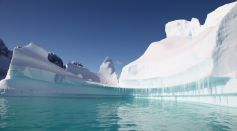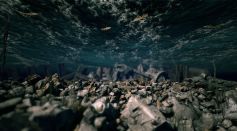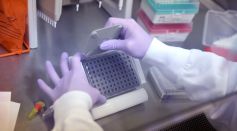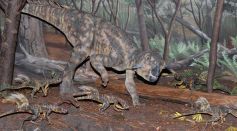ENVIRONMENT & CLIMATE

Scientists Found a 'Hidden World' 1,600-Foot Underneath the Thick Ice in Antarctica

Diver Swallowed Whole by a Massive Humpback Whale; How Did He Survive?

Sriracha Shortage: Drought and Weather Changes Could Cause Scarcity of the Favorite Hot Sauce

Cat vs. Coyote: Who Wins in the Scrappy Attack On Texas Porch? [Watch]

Living Galapagos Giant Tortoise Discovered for the First Time After 100 Years of Being ‘Extinct’

Aggressive Space Reptiles Want to Have a ‘Fascist’ System and Take Over Planet Earth, Professor Claims

Britain's Lost Atlantis City Found After It Sunk Underwater in 650 Years [Report]
Meet Therizinosaurus From 'Jurassic World Dominion' A.K.A. Scythe Lizard: Herbivorous Dinosaur Could Kill A T. Rex

Google's 'Dynamic World' Tool Lets Us See Features Like Trees, Crops and Water on the Surface of Earth, Almost Real-Time

Car Tires Tagged As Major Pollution Contributors, Not Exhaust Fumes

Climate Change Alters Oceanic Ecosystems Making Predators Hungrier

First Avian Flu Cases in Southwest Confirmed, Leading to Deaths of 37 Million Commercial Farm Birds in Parts of US

Plastic Eating Superworm Discovered by Australian Scientists; Worm Microbiome Could Hold Secrets to Higher Recycling Rates

First Preserved Fossil of Psittacosaurus Dinosaur With Umbilical Scar Equivalent to Belly Button Discovered in China
Most Popular

Will Earth's Magnetic Poles Flip Next? Magnetic Pole Reversal Explained Through Cutting‑Edge Magnetosphere Science

Relativity Time Dilation Explained: The Physics of Time and Why It Moves Differently in Space

How Lightning Science Reveals Why Charged Storms Are Rising with Global Warming Effects

How AI Is Used in Weather Prediction: Smarter Forecasting Through Machine Learning





